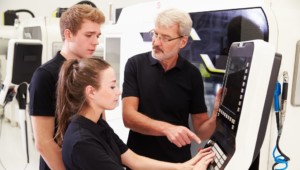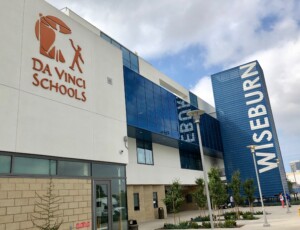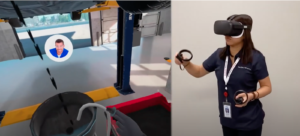Lining Up Career Dreams with Reality

By: Dr. Suzette Lovely
Offshore wind farmer, app designer, drone photographer, an UBER driver are all jobs that didn’t exist a decade ago. Today these occupations are on the rise. In our variegated labor market, job opportunities and requirements change on a dime. The question for educators is: How do we build exposure and aspirations around careers no one is able to imagine?
Out of Sync
The roots of Career and Technical Education (CTE) date back to 1917 when the federal government first began funding vocational education. At the time, skill development was centered on agriculture, homemaking, industrialization, and post-war job training. By the middle of the 20th century, astronaut and rocket scientist had emerged as the dream jobs of the future. Since that time, an array of state and federal grants have been offered to expand CTE access to K-12 students.
Despite this surge in CTE coursework, a recent report in Ed Week noted that the dream jobs of today’s youth mirror the dream jobs from twenty years ago. For example, in 2020 high school sophomores said they aspired to become doctors, lawyers, teachers, business managers, architects, and police officers. Separately, girls identified nursing, psychologist, designer, and veterinarian among their top ten dream jobs. This reflected a slight change from the girls’ 2000 list, which included hairdresser, writer, and secretary. Boys, on the other hand, identified information and communication technology (ICT) professionals, sportspeople, and mechanics as their top ten dream jobs, which is exactly the same as it was in 2000.
Over the last two decades, CTE programs have been rebranded and millions of dollars have been spent to ensure workforce readiness meets the demands of regional economies. Yet, the career interests of teenagers have remained static. Clearly, students need authentic experiences to envision an array of occupations that not only generate excitement but are also within reach. Raising aspirations has to start early.
Ready for Anything
So what should students be learning in the age of robotics, artificial intelligence, global pandemics, and myriad social justice issues? According to employers, the lessons students need for their future are less about reading, writing, and arithmetic and more about influencing others, seeing beyond the obvious, adapting to changing environments, and engaging with others across time zones. Our graduates have to differentiate themselves by rising beyond average and bringing a spark of imagination to whatever they do. It’s hard to envision how a student trained in passive listening will be ready for anything.
Opening Doors to Work-Based Learning
Work-based learning is a growing trend that can synchronize students’ career interests with emerging economies. While countries like Germany and Austria have infused work-based learning programs into their schools, the United States is still trying to find the sweet spot between participation and outcomes.
In 2015, a consortium of fifteen school districts and five community colleges in San Diego County joined forces to build a career development program focused on robust employer engagement. With a $13 million Career Pathways Trust Grant (CPTG) in hand, our imperative was to ensure efforts focused on the needs of the regional workforce. To that end, a continuum of work-based learning experiences was developed to fully immerse students in a field of interest by the time they left high school. Through direct interactions with career professionals, students would be able to learn about work, through work, and for work.
One-Stop-Shop
As lead superintendent of the consortium, I listened to concerns from industry leaders like Qualcomm, Cox Communication, NRG, and others about the haphazard way business-school partnerships were formed. Individual teachers, principals, and school foundations inundated companies with requests for support. Yet, there was no centralized way to track requests, evaluate needs, or align resources with corporate goals (Lovely, 2020).
To streamline collaborative efforts, an eportal was developed with the help of ConnectEd Studios and the Linked Learning Alliance. The goal of the eportal is to connect students with transformative work experiences using a one-stop-shop. Not only does the eportal provide a plethora of resources to improve how students learn about careers, but it also links teachers and students to industry professionals who help design authentic projects, assess student work, and engage learners through job shadowing, mentoring, and internships.
This catalytic use of on-line and offline tools has helped bridge academics with the world of work throughout San Diego County. Curriculum, classroom activities, and school projects offer students a foundational understanding of available job opportunities. This is coupled with firsthand interactions with industry professions that give learners a bird’s eye view into the ‘dream jobs’ within the region. Not only are these jobs in high demand, but they also pay well too.
Conclusion: The Sandbox Manifesto
While the K-12 landscape is dotted with collaborative undertakings between industry and education, efforts have shown mixed results. Absent a framework for disparate groups to come together, educators and industry professionals will struggle to work in unison. Forming alliances with people who aren’t accustomed to playing in the same sandbox require new rules and tools. Consider four tenets to work better and stronger together (Lovely, 2020).
- Get the right people in the room: Before forming any type of coalition, make sure the right people are in the room. Everyone should agree on the issue and goals of the partnership before proceeding.
- Use structure over strategy: To build momentum, educators and the business sector have to collectively see, learn, and do together. Rather than create a running list of activities, focus on how teachers and industry professionals will engage with one another over a given period of time. When structure precedes strategy, it builds a foundation on which group efforts and behavior are framed.
- Enroll partners to your cause: While many outside professionals want to help schools, don’t assume they’ll automatically include your organization in their cause. To enroll local industries in work-based learning, develop a compelling story, invite prospective partners to participate in key school events, and involve students in the ‘enrollment’ process. Industry experts who make an emotional connection with your work are more eager to play on your team.
- Share credit: In any joint venture, sharing credit is far more important than taking it. Draw attention to industry contributions through mutually reinforcing activities and public relations campaigns.
No matter what ‘dream job’ students might pursue, our responsibility as educators is to make sure they’re ready.
For more, see:
- Shauntel Garvey on EdTech Impact Investing
- Beyond the 4Cs: Empowering Youth in the 21st-Century
- Personalized Learning Is Special Education and the Time Is Now
Dr. Suzette Lovely spent 35 years serving K-12 schools in every capacity from instructional aide to teacher to principal to central office administrator. During her role as Superintendent in Carlsbad, California she spearheaded several efforts to bridge classroom learning with career readiness. Dr. Lovely’s latest book Ready for Anything builds a new world of meaning for educators in preparing students for college, career and a good life.
Stay in-the-know with innovations in learning by signing up for the weekly Smart Update.





Madilynn
I love this It gives me all the information I need thank you!